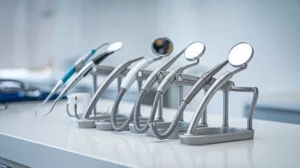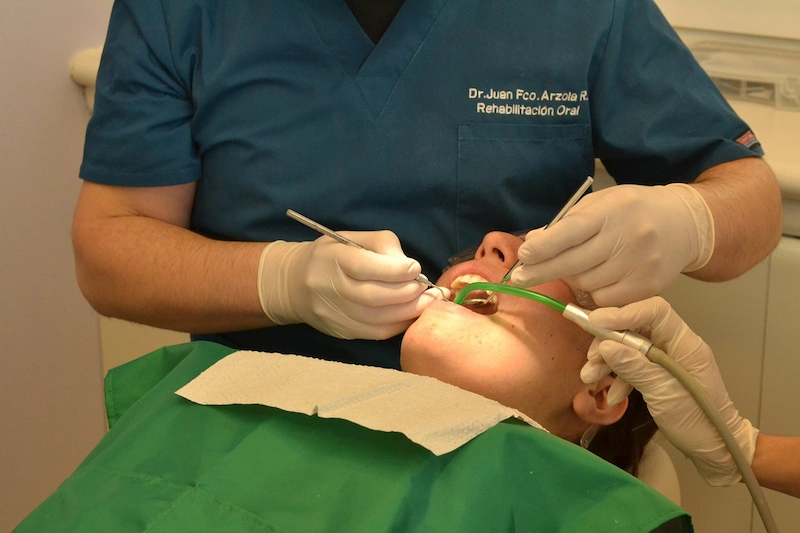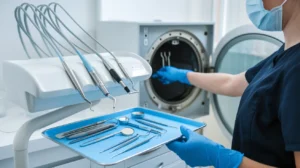
How to Choose the Best Dental Mouth Mirror for Oral Care
Picking the right dental mouth mirror might seem like a small task, but it’s actually pretty important for keeping your teeth and gums healthy. With so many options out there,

Tooth extractions rank among the most common dental procedures worldwide, with millions of patients needing them each year. Dental professionals understand that successful extractions rely on having the right tools ready.
Oral Surgery Extraction Forceps are the life-blood of dental extraction procedures. These precision instruments help us perform extractions in the quickest way possible that ensures patient comfort and reduces complications.
This detailed guide explores oral surgery extraction forceps labeled for different procedures. The content covers available types, key features to think over while selecting forceps, proper usage techniques, and maintenance guidelines. These insights will help you make better decisions for your practice.
Our dental practice uses extraction forceps of all types, each designed to meet specific procedures and patient needs. These tools are the foundations of our surgical toolkit, and they fall into three main categories.
Standard extraction forceps serve as essential instruments for routine adult tooth extractions. These versatile tools work well on most permanent teeth because of their universal design. These forceps have several key features: • Balanced weight distribution • Serrated beaks for better grip • Universal handles to help you retain control
Pediatric forceps play a vital role in treating our younger patients. These instruments are smaller and more delicate than standard ones. Their refined design gives us precise control while we work with primary teeth and smaller jaw structures.
Complex cases require specialized extraction forceps. Our collection includes wisdom tooth forceps, root forceps, and position-specific designs. These tools stand out because their customized angles and beak designs let us reach tough spots in the mouth while maintaining clear visibility and control.
Each forceps type in our toolkit has its unique purpose. Selecting the right instrument is a vital part of successful extractions. The best outcomes come from choosing appropriate forceps based on tooth location, root structure, and the patient’s age.
The right features in extraction forceps can make a substantial difference in procedure outcomes and practitioner comfort. Let’s look at everything we need to think over.
High-quality surgical-grade stainless steel forceps, especially German or French stainless steel, remain our top priority due to their superior durability. Experience shows that these tools are a great way to get exceptional longevity and reliability despite their higher original cost. Premium-grade stainless steel maintains its integrity through repeated use and resists corrosion.

Dental professionals hold their instruments for about 2,000 hours each year. Ergonomic design becomes a vital part of our practice. Quality forceps should have:
These design elements help prevent carpal tunnel syndrome and reduce hand fatigue substantially.
Our forceps must work with standard sterilization methods. The American Dental Association classifies extraction forceps as critical devices that need sterilization after each use. Our instruments should withstand:
These features help us perform procedures that are nowhere near as demanding on both practitioners and patients. The quickest way to achieve better outcomes starts with selecting the right tools.
The proper technique for using oral surgery extraction forceps is vital for successful dental procedures. Our detailed approach comes from years of clinical experience.
Several factors contribute to successful extractions in our practice. Always maintain a firm grip without excessive force. This approach helps prevent instrument slippage and potential tissue damage.
These tips will help you use forceps effectively:
Note that the right technique depends more on precision and patience than force. Taking a moment to verify positioning prevents complications and leads to smoother procedures.
The safety of our patients and the durability of our instruments depend on how well we maintain our oral surgery extraction forceps. We have created a complete care routine that helps these vital tools last longer and meet hygiene standards.

Our practice follows a strict cleaning protocol that starts within 15–20 minutes after each procedure. This quick action stops blood stains from becoming hard to remove. Our cleaning process has these steps:
Automated cleaning methods work best because they eliminate human error and clean all surfaces thoroughly. The sterilization process requires specific temperature ranges between 134–137 degrees with pressure between 2.1 and 2.24 bar gags.
Proper storage is critical to protect our instruments. We make sure all forceps are completely dry before storage to stop surface erosion. Our storage protocol includes:
Our instruments stay in covered cabinets, away from sinks or wet areas. We organize by placing heavier instruments at the bottom and lighter ones on top, which prevents structural damage. The storage environment’s temperature control helps protect the instruments’ integrity. Sterile and non-sterile instruments remain separate to prevent cross-contamination.
Dental extraction forceps are crucial tools we use daily to perform successful tooth extractions. Our years of hands-on experience shows that better patient outcomes and equipment longevity depend on choosing the right forceps. We need to become skilled at proper techniques and take good care of these instruments.
Quality extraction forceps are one of the most important investments for our practice’s success. These tools come in many specialized designs – from standard adult forceps to pediatric versions and specialty instruments. This variety helps us handle different extraction cases precisely and confidently.
Taking care of forceps goes beyond basic cleaning and sterilization. Our detailed maintenance plan and proper storage methods protect our investment and ensure patient safety. These steps have helped us achieve consistent results in our dental work.
Note that the quality of our tools and their proper use determine extraction success. Better patient experiences and protected dental instruments result from selecting appropriate forceps, maintaining them well, and using correct techniques.
These are the answers to questions we often get about oral surgery extraction forceps in our practice.
Our practice uses forceps as specialized instruments that grasp and manipulate tissues during dental procedures. These essential tools help us with:
We use extraction forceps to grasp and remove teeth from their sockets. Their unique design lets us apply controlled pressure and use mechanical advantage while protecting surrounding tissues. These tools work as extensions of our hands and give us precise control during extractions.
Extraction forceps are the most important tools in our surgical kit for tooth removal. Experience shows that these specialized instruments work best with elevators to perform dental extractions. The key is selecting the right forceps that match each tooth and situation.
Surgical forceps are critical devices in dentistry. Their classification depends on specific uses – hemostatic forceps, tissue forceps, dressing forceps, and microsurgical forceps. Each type plays a unique role in our surgical procedures.
Our systematic approach to applying forceps includes these steps:

Picking the right dental mouth mirror might seem like a small task, but it’s actually pretty important for keeping your teeth and gums healthy. With so many options out there,

Dental mirrors have come a long way. From simple reflective tools to sophisticated gadgets, they play a key role in modern dentistry. With constant innovation in dental mirrors, these aren’t

Hey there, dental pros! Today, we’re diving into something super important but often overlooked—how to properly mouth mirror sterilization. If you’re in the dental field, you know these little tools
At The Surgical Kit, we are committed to providing healthcare professionals with the finest tools to ensure precision and safety in every procedure.